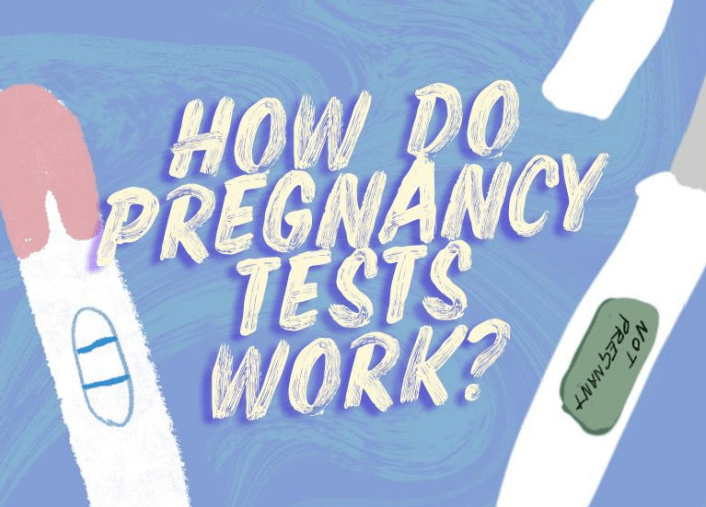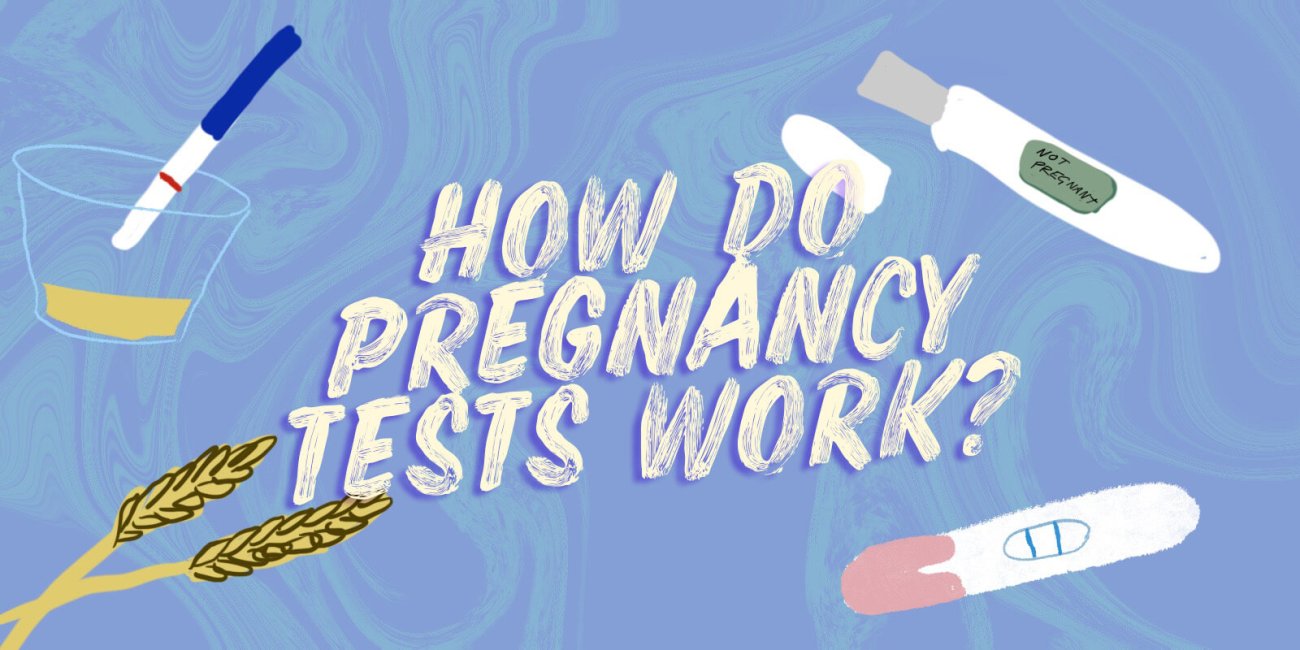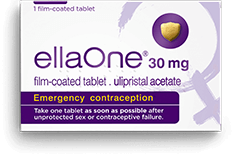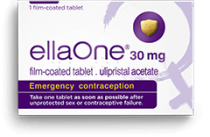How Do Pregnancy Tests Work?
Did you ever hear about the ancient Egyptian practice where women peed on bags of grain – wheat and barley, to be specific – to find out if they were pregnant? It sounds ridiculous, but it worked! If the seeds sprouted, that was a positive result. Scientists now think that this might be because of a higher-than-usual amount of oestrogen in the urine. It took about a week, but it was definitely better than not knowing.
Loads of different methods have been developed over the years; one method developed in the 20s involved injecting mice with urine and seeing if the hormones present in the urine caused them to ovulate (indicating a positive result). Yeah, we’re glad that we missed out on that one too.
In the 1970s (literally thousands of years after the Egyptians worked out their method), we finally got at-home, same-day tests that you could pick up at the pharmacy. This early at-home test was a little more complex than what we have now – it took two hours and involved mixing urine with chemicals and waiting two hours to see if a red circle was reflected in a mirror.
Needless to say, things have changed. All of these examples are a far cry from the lateral flow tests we use now. Today you have the option of either peeing directly onto a stick or dipping the stick in a urine sample and waiting until a line does or does not appear. How does that actually work though?
How do at-home pregnancy tests work?
The pregnancy tests we have now often consist of a strip of paper or plastic with an absorbent pad at one end. Sometimes the test is in a plastic casing with a window or a digital screen so that you can see your result, and sometimes they even come in the form of a simple cardboard strip a few millimetres wide.
These tests can detect pregnancy when you add urine to the absorbent pad on one end. The urine is absorbed and flows through the strip, and a line either does or does not appear. If your test is working correctly, a control line will appear either way, confirming that a sample is passing through the test strip.
You might be wondering “How do digital pregnancy tests work? – the high-tech ones that can say the words “pregnant” or “not pregnant”. You might be surprised to find out that they contain the same strip, along with a sensor that can tell when the colour of the test line has changed.
The test line itself contains antibodies that are designed to bind specifically to the hormone human chorionic gonadotrophin (hCG). If hCG is bound to the antibodies as they move through the test line, the dye will react and change colour. This is what causes the positive line to appear on the pregnancy test.
How soon will a pregnancy test read positive?
Many pregnancy tests claim to work from around 2 weeks following ovulation – or when you miss your period – so that is an important factor in deciding when to take a pregnancy test. Your test can appear “positive” a little sooner, especially if you choose a test designed to give an early result.
Some early response tests can be used as soon as 6 days before your missed period, but accuracy rates are lower. The accuracy of pregnancy tests also varies between brands. If you do test early and get a negative result but are experiencing pregnancy symptoms – particularly a missed period – then consider retesting.
What is hCG?
Human chorionic gonadotrophin (often referred to as hCG) is produced by the placenta during pregnancy. It helps to thicken the uterine lining and communicate to your body that it is pregnant and to pause the menstrual cycle. It rises throughout the first trimester (the first 12 weeks or 3 months) and falls throughout the rest of the pregnancy.
Can you get a false pregnancy test result?
It is possible to get a false result, although as long as you’re not testing too soon you’ll usually get an accurate result. False negatives can happen when you test too early…or too late! As previously mentioned, levels of hCG taper off later in pregnancy, so you could be towards the tail end of a healthy pregnancy and still get a negative.
If you’ve miscalculated your cycle and think you’ve missed your period, you could end up testing too early even though you think it’s exactly the right time. It’s also a good idea to take your test first thing in the morning when you wake up, as the hCG concentration in your urine is at its highest then. When your pregnancy test is negative but your period still isn’t starting, it might be worth a chat with your GP.
It is unlikely that you will experience a false positive, but not impossible. This may happen if you’ve had a recent pregnancy loss or ended a pregnancy, and hCG is still detectable in your urine, or if you’re taking certain medications like hCG shots which stimulate egg release and are used in fertility treatment.
Other medications, including some anti-anxiety drugs and antihistamines, can also lead to a false positive. If you’re taking any of these medications and trying to conceive or suspect a false positive on a pregnancy test, consult your GP or pharmacist.
Sometimes illness or infection can cause your body to overproduce hCG, so in rare cases, medical conditions like urinary tract infections (UTIs) or certain types of cancer can cause false positives, particularly some ovarian cancers amongst others. If you’re experiencing unexplained symptoms along with a positive pregnancy test, it’s crucial to consult your GP or pharmacist.
It’s also possible if you wait longer than the time recommended in your pregnancy test’s leaflet that you will see an evaporation line where you would usually see the “test” line.
What is an evaporation line?
An evaporation line is an indent in the test where the ink pools if your result is positive. As the test dries after being wet, the indent line becomes visible. The key difference is that a positive test line will contain dye and likely be pink or blue depending on the brand of your test, but an evaporation line will appear grey and empty. You must read your test during the given timeframe to not be misled by the evaporation line.
Should I take a pregnancy test?
If you are under any suspicion that you could be pregnant, do it. It’s worth it for the peace of mind. If you’ve missed your period and are experiencing symptoms like nausea, fatigue, or sore breasts, please consult your GP.
If you’ve had a negative result and you want to keep it that way, your best bet is to use protection when you’re having sex. If you do have unprotected sex or experience contraceptive failure, consider taking ellaOne®. ellaOne® is an emergency contraceptive pill (or morning-after pill) that is effective for up to 5 days following unprotected sex. You can pick it up from your pharmacy with no prescription or appointment required.
If you are concerned that you may already be pregnant but have taken ellaOne®, please consult your GP immediately. In the meantime, check out our FAQ to ease any concerns you may have: “Can ellaOne® harm a baby?”
Want to learn more about ellaOne®, contraception and conception? We have loads of informative articles for you to check out, like this one about what it’s like to take the morning-after pill, or why not check out our #AskElla section?
Have you ever taken the morning after pill? Why not share your story below?
ellaOne® 30mg film-coated tablet contains ulipristal acetate and is indicated for emergency contraception within 120 hours (5 days) of unprotected sexual intercourse or contraceptive failure. Always read the label.




